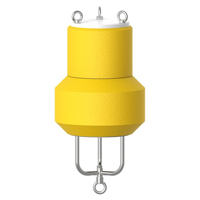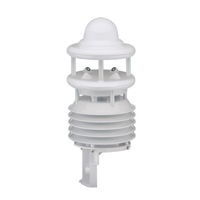 The Chicago Park District is one of the largest municipal park managers in the nation with 8,100 acres of green space spread across 580 different parks. It also manages many indoor facilities, historical landmarks and beaches.
The Chicago Park District is one of the largest municipal park managers in the nation with 8,100 acres of green space spread across 580 different parks. It also manages many indoor facilities, historical landmarks and beaches.
At eight of its most popular beaches, the District has used cellular data buoys, for four years, in an effort to more quickly predict E. Coli levels that could necessitate beach closures. Chicago Park District has worked with NexSens Technology to source the equipment needed for the monitoring program, including buoys, data loggers, various water quality sensors and web datacenter services.
The network of cellular data buoys began operating in the early 2010s as a pilot program and has since grown into a large-scale operation for city managers each summer. Along with its expansion, various research efforts have sampled its data for use in scientific studies to affirm the effectiveness of its E. Coli prediction modeling approach.
In one study posted in the Journal of Environmental Management, researchers with the U.S. Geological Survey, Chicago Parks District and Michigan State University found that the modeling approach outperformed the traditional method for E. Coli monitoring in terms of accuracy and specificity.
Finding the right solution
 NexSens MB-100 (CB-50 – current model) cellular data buoys are used along Chicago’s Lake Michigan shoreline each summer. These 100-pound buoyancy platforms are deployable by one person and can easily be put in place by divers wading into nearshore waters.
NexSens MB-100 (CB-50 – current model) cellular data buoys are used along Chicago’s Lake Michigan shoreline each summer. These 100-pound buoyancy platforms are deployable by one person and can easily be put in place by divers wading into nearshore waters.
Inside each data buoy is a NexSens SDL500C submersible data logger that records measurements from sensors below. In many cases, FTS DTS-12 Digital Turbidity Sensors are mounted to instrument cages on the buoys. The turbidity readings they collect are a key component of the E. Coli models produced. NexSens Accustage water level sensors are also used on some buoys to track wave height fluctuations.
In addition to the floating platforms, multiple Lufft WS600 Multi-Parameter Weather Sensors are deployed along the Lake Michigan coastline. These are mounted on top of NexSens 3100-iSIC MAST wireless telemetry systems and provide important measurements on solar radiation, wind speed and direction, humidity, air temperature, barometric pressure and precipitation that help to refine models further.
Information gathered by the data buoys and weather stations are transmitted to the NexSens WQData LIVE cloud via cellular signal, allowing operations managers easy access to real-time data on beach conditions. Data from all buoys in the network are posted on the Chicago Park District website so that beachgoers can also find them there.
Water Quality Equipment
The CB-50 data buoy is designed for quick deployment in emergency response situations including industrial spills and natural disasters.
The X2-SDL Submersible Data Logger is a rugged, self-powered data logging system with optional cellular, satellite, or radio communications.
Weather Monitoring Equipment
This fully pre-configured system utilizes cellular, radio, or satellite telemetry and solar
charging to create a truly plug-and-play data collection and sensor interface platform.
The Lufft WS600 Multi-Parameter Weather Sensor simultaneously measures air temperature, humidity, pressure, precipitation & wind with an integrated electronic compass for corrected wind direction on moving platforms.
WQData LIVE is a web-based project management service that allows users 24/7 instant access to data collected from remote telemetry systems.





